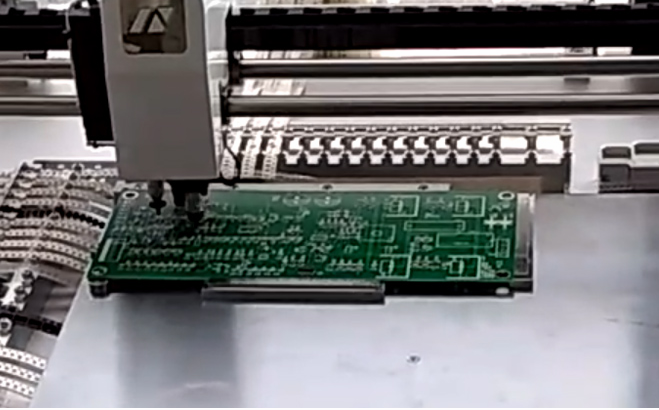Novices often do not know what needs to be prepared and how to do it during the PCB soldering process, which is what we often call the process flow. Here is a brief introduction to the process flow of circuit board welding:
Ready to work:
1. Welding materials
1) Solder Generally, Sn60 or Sn63 solder that meets American general standards is used, or HL-SnPb39 type tin-lead solder is used.
2) The flux can usually be rosin flux or water-soluble flux, the latter is generally only used for wave soldering.
3) The cleaning agent should ensure that there is no corrosion and pollution to the circuit board. Generally, anhydrous ethanol (industrial alcohol), trichlorotrifluoroethane, isopropanol (IPA), aviation washing gasoline and deionized water are used for cleaning. Clean. The specific cleaning agent used for cleaning should be selected according to the process requirements.
2. Welding tools and equipment
1) The reasonable selection of the power and type of the electric soldering iron is directly related to the improvement of welding quality and efficiency. It is recommended to use a low-voltage and temperature-controlled electric soldering iron. The soldering iron tip can be made of nickel-plated, iron-plated or copper, and the shape should be determined according to the needs of soldering.

2) Wave soldering machine and reflow soldering machine are one of the welding equipment suitable for industrial mass production.
Circuit board welding process:
3. The operation points of PCB electronic circuit board welding
1) Manual welding
1. Check the insulating material before welding, and there should be no burns, scorching, deformation, cracks, etc., and no scalding or damage to the components is allowed during welding.
2. The welding temperature should usually be controlled at about 260 degree Celsius, and it should not be too high or too low, otherwise the welding quality will be affected.
3. The welding time is usually controlled within 3s. For weldments with large heat capacity such as multilayer boards, the entire welding process can be controlled within 5s; for weldments of integrated circuits and heat-sensitive components, the entire process should not exceed 2s. If the welding is not completed within the specified time, wait for the solder joint to cool down and re-weld. The quality standard for re-welding should be the same as the solder joint standard for a single welding. Obviously, due to factors such as the power of the soldering iron and the difference in the heat capacity of the solder joints, there is no definite rule to follow in the actual control of the soldering temperature, and specific conditions must be treated in detail.
4. During soldering, prevent adjacent components and printed boards from being affected by overheating, and take necessary heat dissipation measures for heat-sensitive components.
5. Before the solder cools and solidifies, the welded part must be reliably fixed, no swinging and shaking are allowed, and the solder joints should be cooled naturally. If necessary, heat dissipation measures can be used to speed up the cooling.
2) Wave soldering
1. In order to ensure that the board surface and the lead surface are quickly and completely infiltrated by the solder, flux must be applied. Generally, a rosin-type flux or a water-soluble flux with a relative density of 0.81 to 0.87 is used.
2. The circuit board coated with flux should be preheated, and it should generally be controlled at 90~110 degree Celsius. Mastering the preheating temperature can reduce or avoid the sharp and rounded solder joints.
3. In the soldering process, the solder temperature should generally be controlled within the range of 250 degree Celsius±5 degree Celsius. Whether its temperature is suitable to directly affect the soldering quality; the inclination angle of the soldering fixture into the crest opening should be adjusted to 6. The line speed of the soldering beating should be controlled within 1~1.6 n/min; the peak height of the tin surface of the solder bath is about 10mm, and the peak top is generally controlled at 1/2~213 of the thickness of the circuit board. Excessive assembly will cause the molten solder to flow to the circuit. The surface of the board forms a "bridge".
4. After the circuit board is wave soldered, it must be cooled by a suitable strong wind.
5. The cooled circuit board needs to be removed from the component leads.
3) Reflow welding
1. Before welding, the surface of the solder and the welded part must be clean, otherwise it will directly affect the welding quality.
2. The amount of solder applied in the previous process can be controlled, and soldering defects such as virtual soldering and bridging can be reduced, so the soldering quality is good and the reliability is high.
3. The heat source of local heating can be used, so different soldering methods can be used for soldering on the same substrate.
4. The solder for reflow soldering is a solder paste that can ensure the correct composition, and generally does not mix in impurities.
4. Board surface cleaning
After the PCB is soldered, PCB factory personnel must clean the circuit board thoroughly in time to remove residual flux, oil, dust and other contaminants. The specific cleaning process is carried out according to the process requirements.